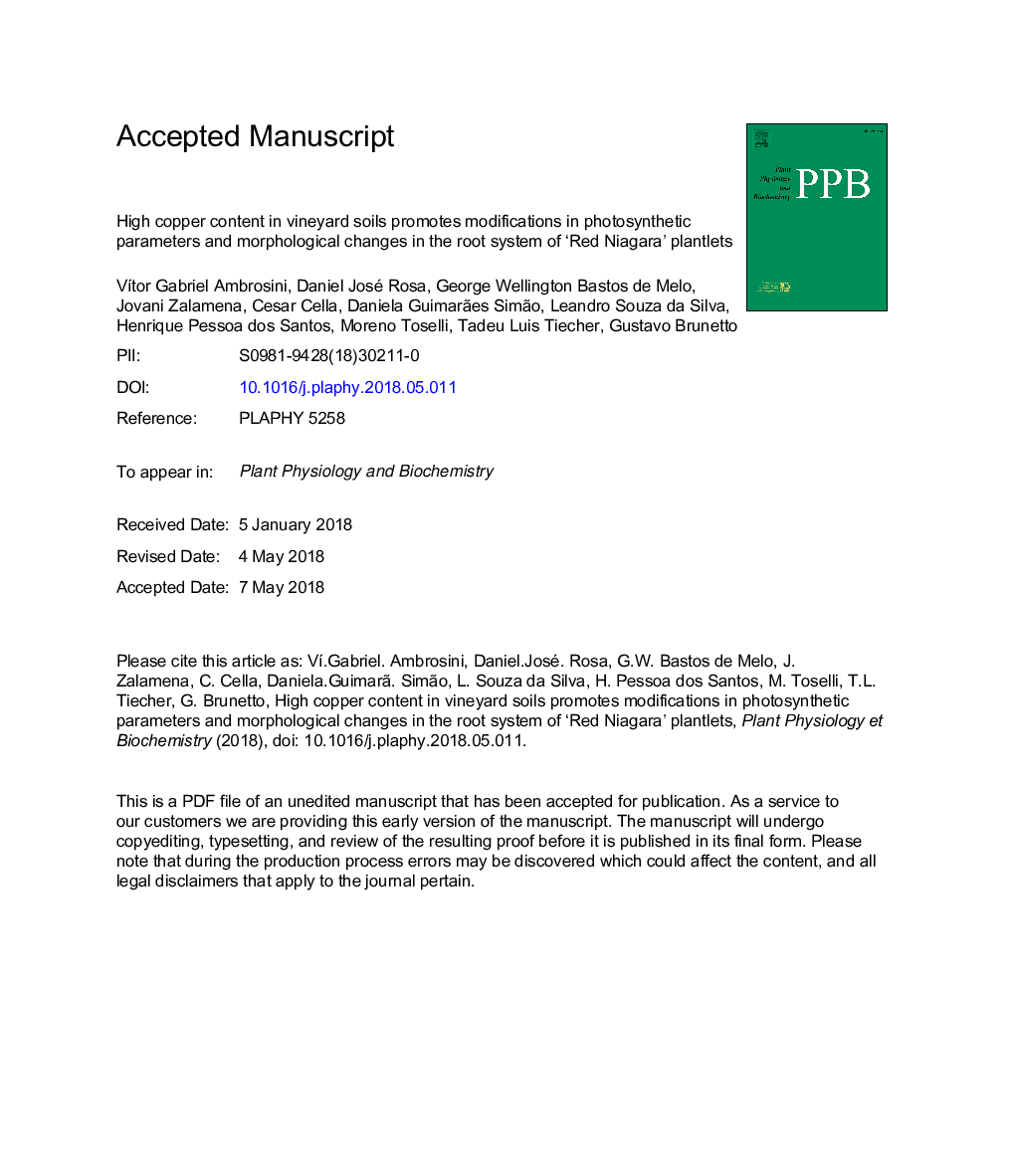| Article ID | Journal | Published Year | Pages | File Type |
|---|---|---|---|---|
| 8352876 | Plant Physiology and Biochemistry | 2018 | 28 Pages |
Abstract
High copper (Cu) soil contents, due to the continuous vineyard application of Cu fungicides throughout the years, may impair the growth of the shoot and modify the structure of the root system. The current study aimed to investigate the threshold levels of available Cu in the soil causing toxicity effects in young grapevine plants of 'Red Niagara' cultivated in clay soils. Grapevine plantlets were cultivated in pots containing vineyard devoted soils with increasing contents of available Cu (25, 80, 100 and 165â¯mgâ¯kgâ1), for 53 days. Photosynthesis and transpiration rates, and the quantum yield of photosystem II (Fv/Fm) were evaluated during the cultivation period. At the end of the experiment, the plant nutrient and leaf chlorophyll were determined, along with the anatomical analysis of the root system structure and plant dry matter determination. Higher levels of available Cu in the soil increased the apoplastic, symplastic and total fraction of the metal in the roots, reducing the other nutrients, especially in the shoots. Photosynthesis, transpiration rates and Fv/Fm were also reduced. Higher levels of Cu led to anatomical changes in the roots, that increased diameter, number of layers in the cortex, vascular cylinder and total root areas. It also resulted in reduced dry matter production by grapevines.
Related Topics
Life Sciences
Agricultural and Biological Sciences
Plant Science
Authors
VÃtor Gabriel Ambrosini, Daniel José Rosa, George Wellington Bastos de Melo, Jovani Zalamena, Cesar Cella, Daniela Guimarães Simão, Leandro Souza da Silva, Henrique Pessoa dos Santos, Moreno Toselli, Tadeu Luis Tiecher, Gustavo Brunetto,
